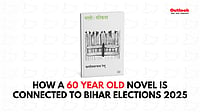In the current fast-paced digital age, access to reliable information has emerged as a necessity as well as a challenge. The conventional newsrooms, which had long been regarded as the pillar of reliable journalism, are now being challenged on their bias, corporate influence, and political agendas. With the evolution of the internet, a new phenomenon is finding its place in the spotlight — decentralized newsrooms. These are autonomous, blockchain-based media outlets that provide a new vision of how news is produced, disseminated, and consumed.
This concept is not merely about reforming the way newsrooms work, but about redefining the whole journalism system to make it democratic, transparent, and accountable. In an information-overloaded world where a lot of disinformation scatters everywhere, decentralization can provide a solution to regain public trust in the media.
What Is a Decentralized Newsroom?
A decentralized newsroom is a model in which no one entity has control over news flow. Rather than a central editor or organization determining what is released, the platform functions through a network of many. There is no central authority of journalists, content contributors, fact-checkers, or readers, but all contribute to the news environment. With blockchain technology, every move made — from submission to approval — gets recorded in an open and irrevocable manner.
This arrangement is meant to minimize the threats of censorship and tampering, which are habitual worries in most conventional media configurations. Decentralization implies that content is not passed through a sole lens but is subject to scrutiny and validation by a community, not an entity.
Trust in Journalism: Why It's Fading
The centering philosophy of journalism is trust. But this was repeatedly broken in the past few years. Large corporations owning news outlets, political agendas, and the dissemination of disinformation have disillusioned readers. Under the pressure to get viewed, many pick speed over accuracy, sensationalism over truth.
A decentralized newsroom provides a solution by engaging more individuals in the decision-making process and enabling more transparency in the reporting of news. When readers are aware of who created a piece, how it was authenticated, and how decisions were reached, they are more likely to trust the content.
How Blockchain Makes It Possible
Blockchain technology forms the foundation of decentralized newsrooms. Blockchain technology stores data in a form that is irreversible and cannot be manipulated. Blockchain operates as a public ledger in which every bit of information carries a timestamp and an unmistakable record of where it came from. In the case of a decentralized newsroom, blockchain guarantees no one can anonymously alter a story or remove it once published.
More significantly, it facilitates open governance. Readers and contributors can decide which stories are worth featuring or exploring further through voting. Rewards and payments can also be fairly dispensed via crypto tokens, promoting valuable and truthful contributions.
This type of framework puts quality journalism and public interest at the center, rather than ad revenue and clickbait.
Democratic Media
One of the most powerful offers of a decentralized newsroom is that it returns control to the people. Rather than editors choosing what the audience needs to know, the audience is integrated into the process. Independent journalists who do not have room in mainstream media can publish their work. Community voting can get significant but underreported stories in the limelight.
This makes it easy to chip away at the overarching grip of giant corporations and governments over the media. It creates avenues through which people from other walks of life, places, and experiences speak out. Inclusivity in journalism means that it becomes representative of the actual world by default.
Challenges Ahead
Although the concept of decentralized newsrooms sounds promising, it's not challenge-free. Technology is yet to be perfected, and not everyone is ready to use blockchain platforms. It also raises the question of how to stop the spread of misinformation without a central agency.
But decentralized platforms are already busy developing solutions like reputation systems, community fact-checking, and identity authentication without sacrificing user privacy. As with any new system, it will take time to refine. But the direction it provides is one of promise, particularly in an age where many are disillusioned with mainstream media.
The Future of Journalism
The future of the press will not be in tall buildings with rows of editors but in networks of devoted people spread all over the world. These people will be bonded not by agreements, but by a common goal — to inform the people truthfully and justly.
Decentralized newsrooms are not just a shift in technology. They are a shift in ethos. A belief that news should be open, participatory, and answerable to the people it serves. They are not here to supplant journalists but to support them. And most importantly, to re-build the trust that good journalism is founded upon.
In an era when truth is frequently drowned out by noise, decentralized newsrooms provide a path forward — an era where transparency is no longer an indulgence, but a norm.

























